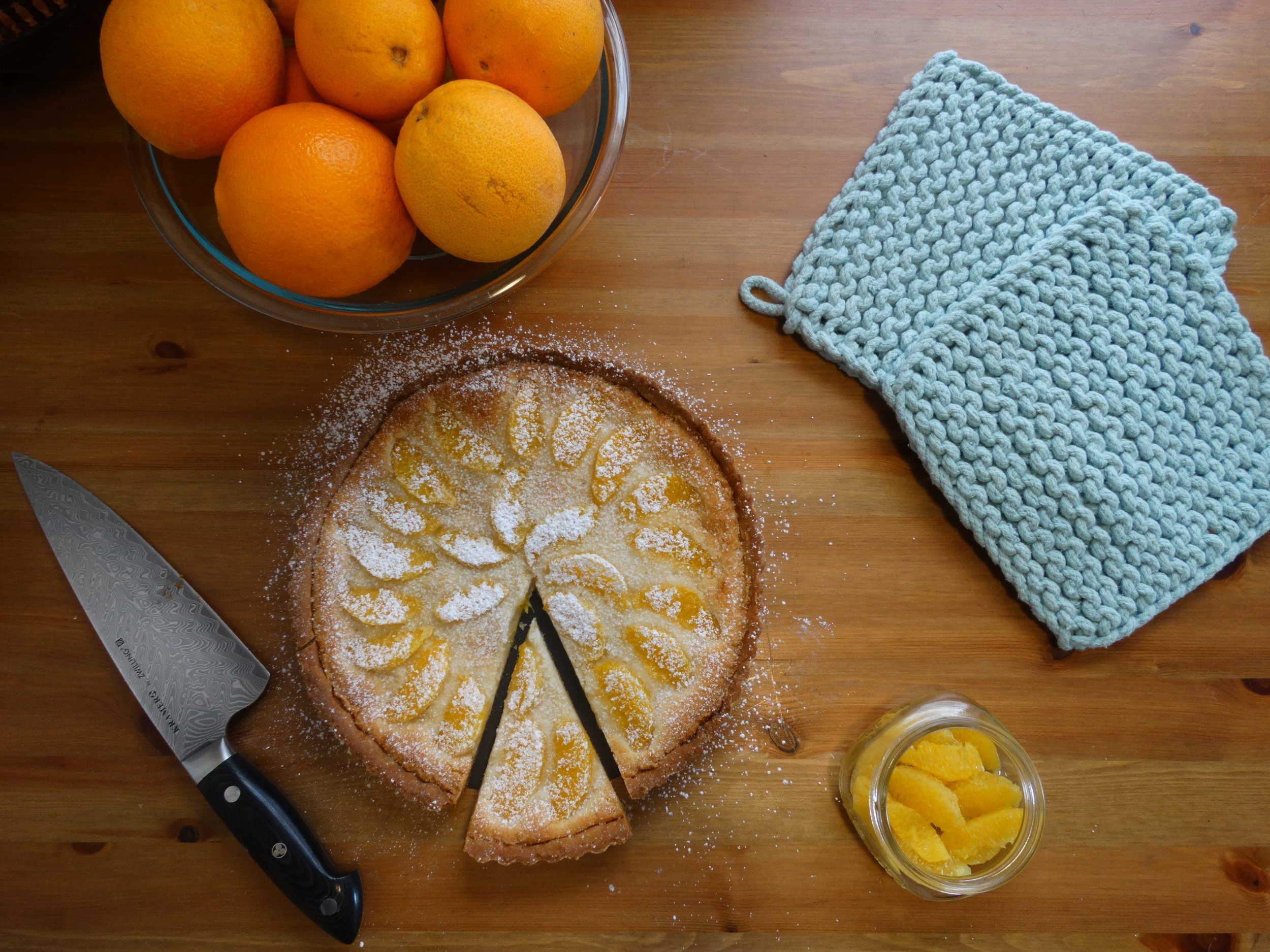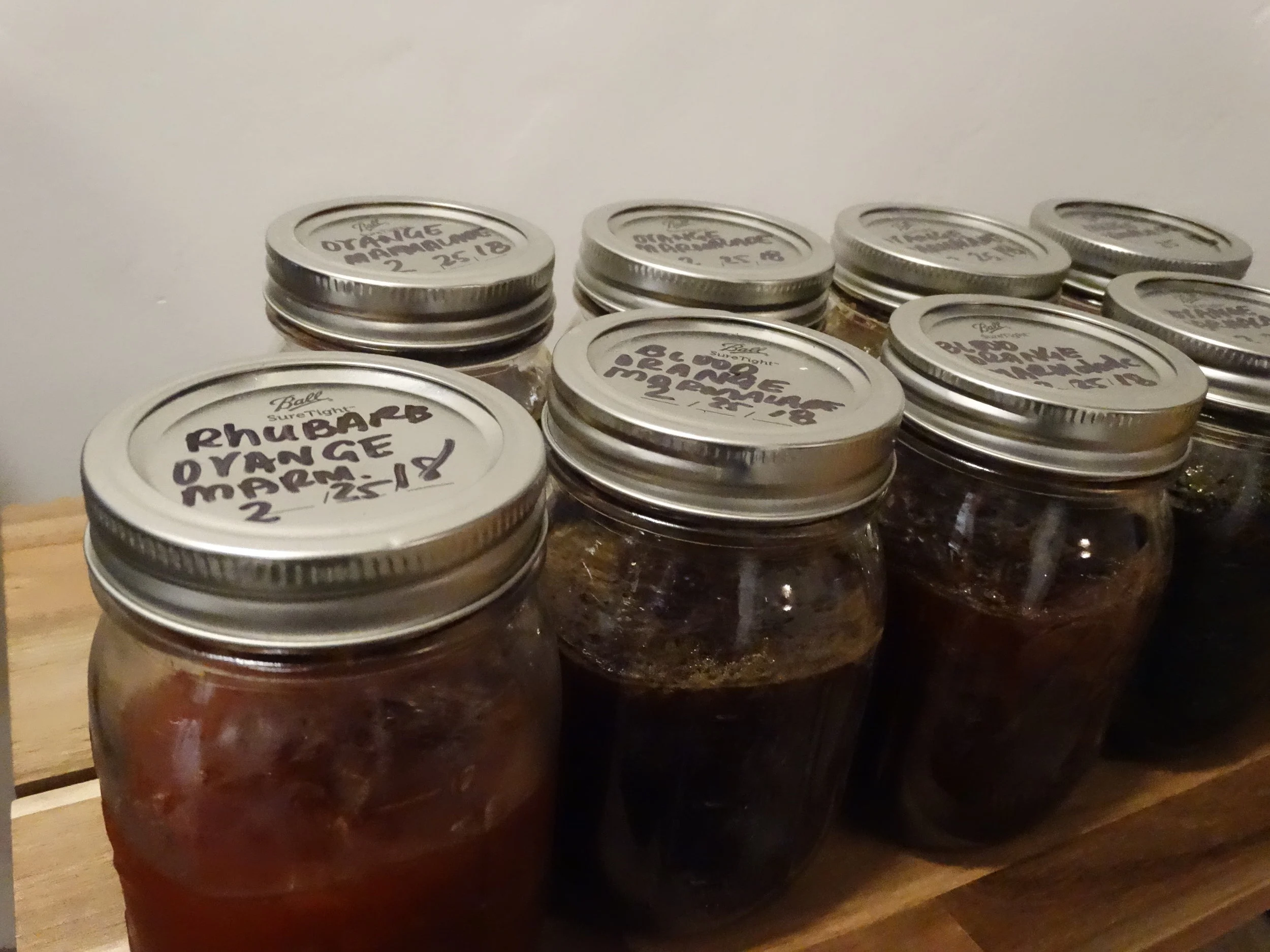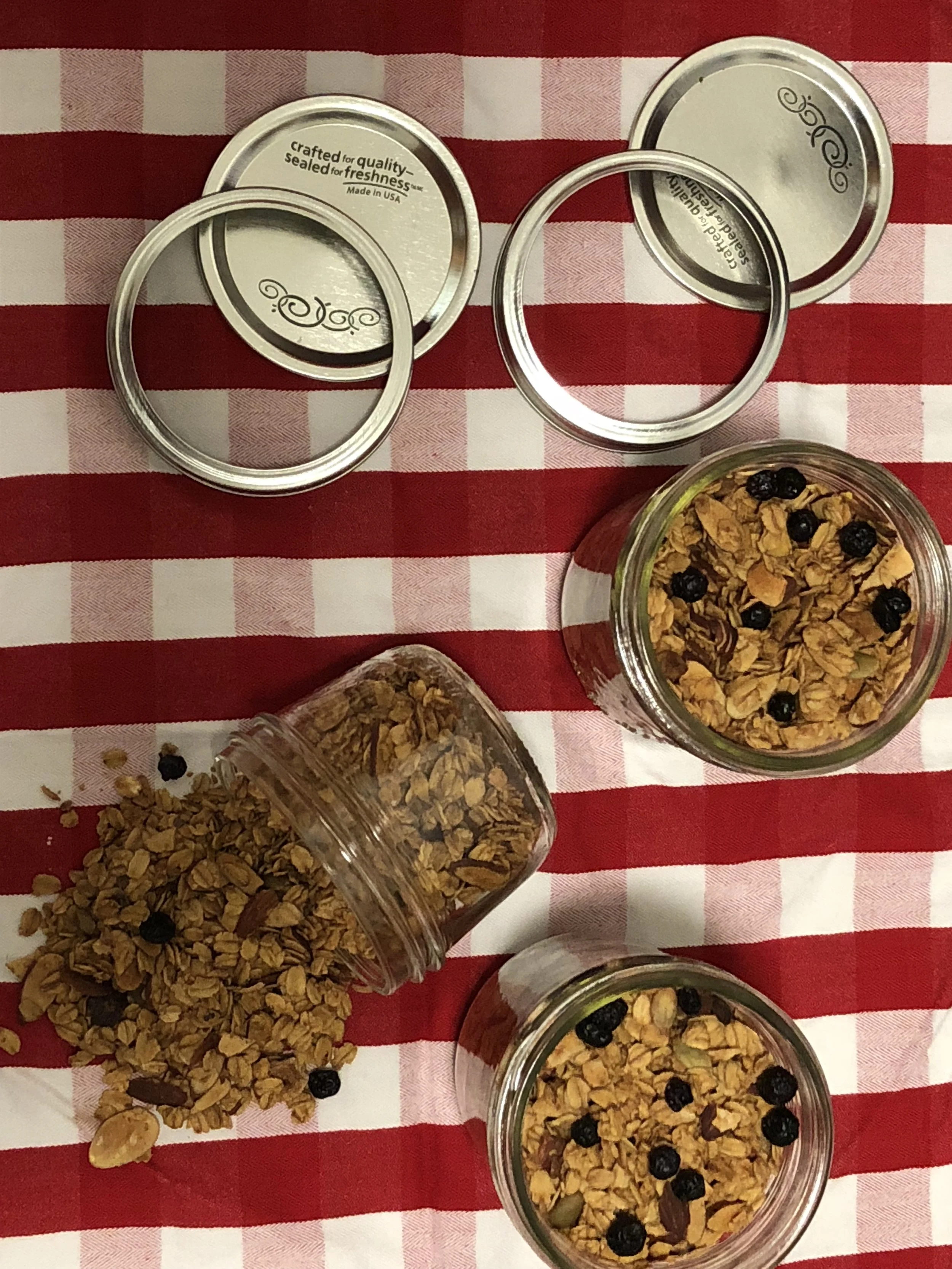Cookbook Spotlight: Around My French Table by Dorie Greenspan (+orange frangipane tart recipe)
"Around my French Table" by Dorie Greenspan was one of my first real cookbooks. At the time I had a small stack of starter cookbooks that friends and family had given me, and I immediately fell in love with Greenspan's approachable take on French pastries and classic baking recipes. If you're not familiar with Greenspan, you'll have to start catching up quickly because the breadth of her work is incredible. The woman wrote a cookbook with Julia Child, yet there are so many other cool things about her, it's hard to keep track. She's certainly an American cooking icon in her own right. Years later, after finishing culinary school and acquiring many more cookbooks, her books are still a go-to for me. She has this recipe for an orange-almond (frangipane) tart that is so simple yet so good, and it was the first pastry recipe I mastered. If practiced, this recipe can be a secret weapon to keep in your back pocket, at the ready for holidays, hostess gifts, or gatherings of any sort. I've learned a lot from her books over the years-- she essentially mentored me via her cookbooks without ever knowing it! There are three components to this dessert-- the actual tart crust, the almond creme filling, and the fruit, which can vary based on what's available. All of the components are relatively simple to master and delicious. This recipe is a great base that allows you to utilize what's on hand or available seasonally.
Another thing I love about Greenspan's books is that she often has a story to go along with the recipe. This orange tart is inspired by one that she had at a patisserie in Paris. Paris is an incredible city, especially for someone who appreciates pastry. I am lucky enough to say that I've been to Paris before, and I've been wishing I could go back again ever since! If you're wishing the same for yourself, but you can't be in Paris right now, making this tart is the next best option.
Orange-Almond Tart, adapted from Dorie Greenspan's Around My French Table:
For the oranges:
4 navel oranges (or 5 if you need some practice segmenting oranges!)
Method: Using a sharp knife, remove the peel from the orange, discarding as much white pith as you can while you expose the flesh of the orange. Follow the curve of the orange to achieve the nicest possible orange segments. Remove the orange segments one by one. Try to get the pieces to release as cleanly as possible with no white pith. Don't get discouraged if you mess up a few pieces-- this is an acquired skill that comes more easily with practice. Set aside the oranges and dry them out on a piece of paper towel for at least 1-2 hours. During this time you can prepare your filling and partially bake your tart dough.
For the tart dough:
AP flour, 1.5 cups
powdered sugar, 1/2 cup
salt, 1/4 tsp
cold unsalted butter, 9 tbsp (cut into small pieces)
egg yolk, 1
Method: Using a food processor, pulse flour, powdered sugar, and salt. Add butter pieces to dry ingredients and pulse until you get coarse patches of dough. Add egg yolk and pulse for a few seconds at a time until the dough forms clumps. Turn the dough out onto a work surface and knead the dough to allow it to fully come together. Spray a 9-inch tart pan (with a removable bottom) with cooking spray. Press the dough into your tart pan now, or chill it first so it's a bit easier to work with (use this option if you want to roll the dough with a rolling pin-- just make sure to flour your work surface so the dough doesn't stick.) Using a fork, prick the bottom of your dough, then chill the dough for about 30 minutes in the freezer before baking. Pre-heat oven to 375 F. Spray a piece of foil with cooking spray and press the prepared foil against the crust, sprayed side down. Place pie weights (or dried beans) in the center of the foil to weigh down the dough and keep it from rising during this step. Bake the crust for 25 minutes, then remove foil and weights. Return crust to the oven and bake for an additional 4 minutes, or until a light golden brown. The crust is now partially baked and ready to cool down before adding your filling.
For the almond cream filling:
unsalted butter (room temp), 6 tbsp
granulated sugar, 2/3 cup
almond flour, 3/4 cup
AP flour, 2 tsp
cornstarch, 1 tsp
egg, 1 each
vanilla extract, 1 tsp
Method: Using a food processor, process butter and sugar until it is smooth. Add almond flour and incorporate. Add AP flour and cornstarch, mix in and then add egg. Process until all ingredients are mixed in. Add vanilla and pulse to mix in. Chill mixture until ready to use.
To finish tart: Preheat the oven to 350 F. Line a sheet pan with parchment and place the prepared tart in the center. Stir the almond cream and spread it evenly on top of the crust. Arrange the orange slices in the pattern of your choice. (Note: As the tart bakes, the filling will bubble up around the orange slices.) Bake the tart for 50-60 minutes or until the filling is golden brown. I like to check my tarts every 20 minutes or so and rotate them if necessary, since ovens can tend to have uneven spots of heat. When the tart is done baking, cool it down. Once cool, remove the tart from the pan (I find it works well to use a large rectangular spatula to get under the tart and nudge it away from the bottom.) Before serving, dust with powdered sugar and slice.
I hope you enjoy making this tart as much as I do. If you don't have a lot of kitchen equipment on hand, just make sure you have a tart pan with a removable bottom. This can work for making desserts or savory quiches and there's no ideal substitute for this tool. You can technically do all of the other stuff by hand if you really have to. (Long before I owned a large food processor and accumulated many cooking tools through culinary school, I would do everything in a mini food processor or by hand. Keep at it, and practice practice practice.) Lastly, do yourself a favor and explore the world of Dorie Greenspan cookbooks. Her books are especially helpful because they mention so many additional tips and tricks for the beginning baker. I treasure so many of her books and what they have taught me. Do you have a favorite "keep in your back pocket at all times" go-to dessert recipe to share? What about a cookbook you have learned from?







